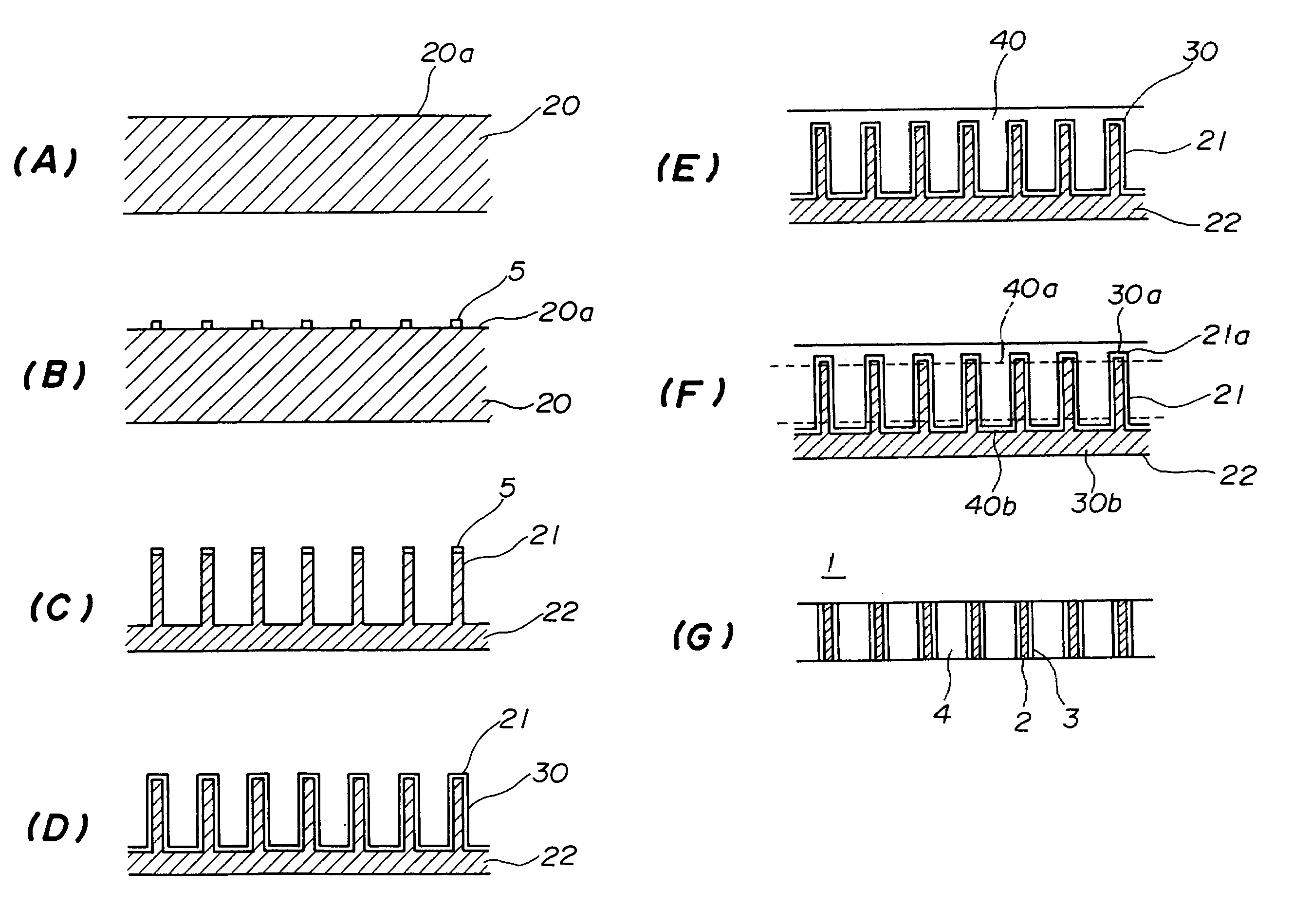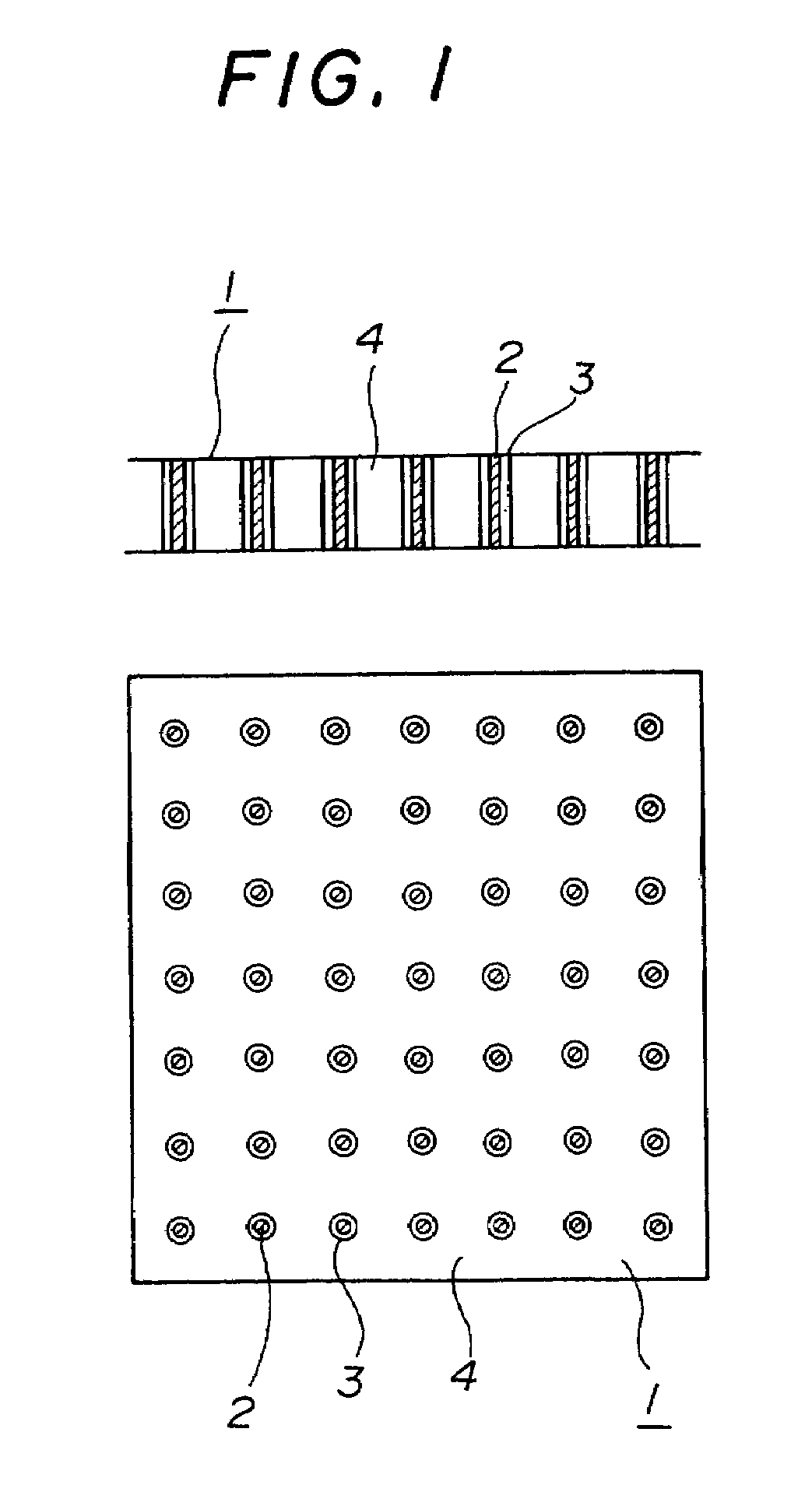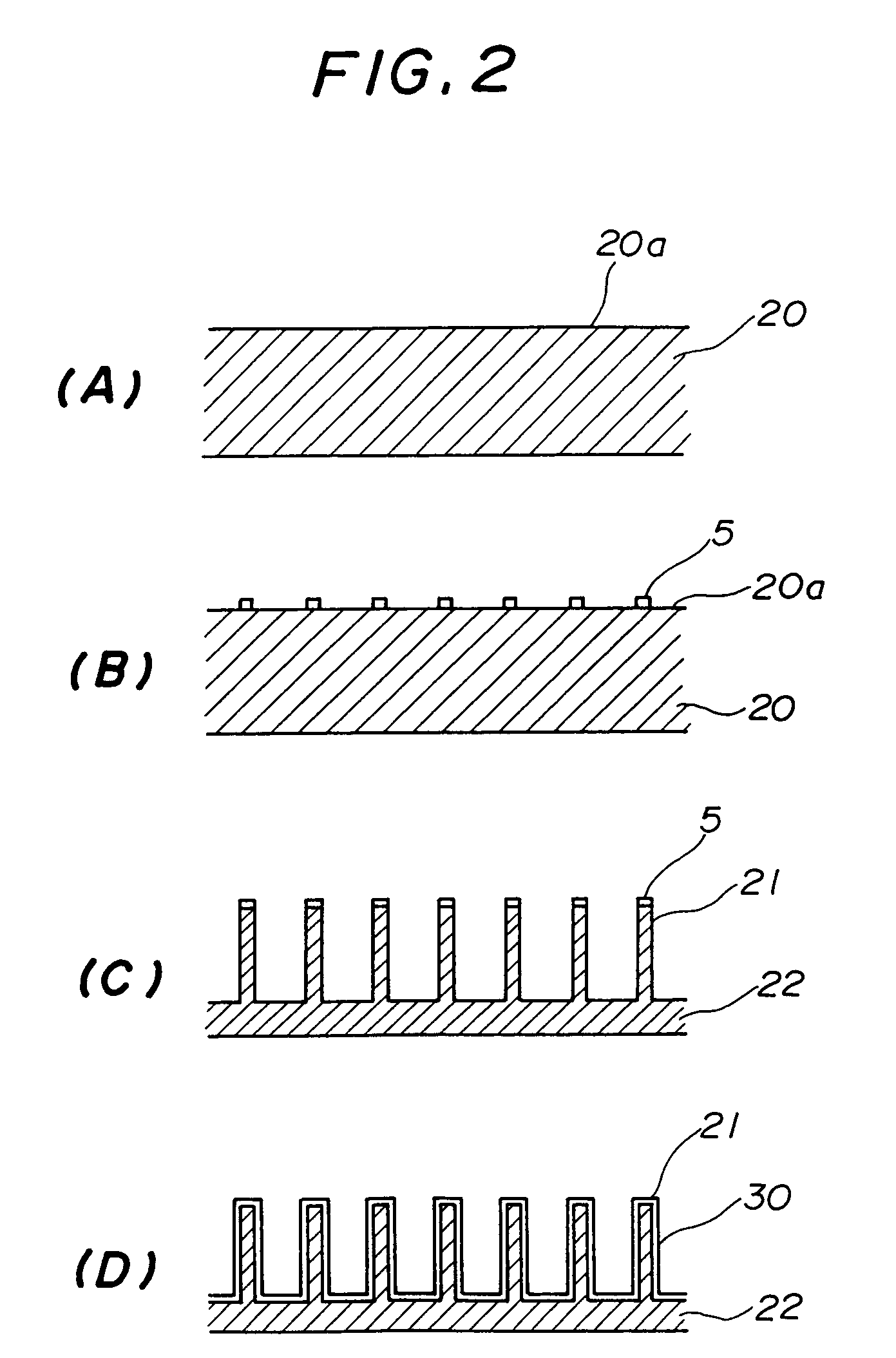Method for making a front and back conductive substrate
a technology of front and back electrodes and substrates, which is applied in the direction of contact member manufacturing, conductive pattern formation, printed element electric connection formation, etc., can solve the problems of organic substrates with the same pitch, the pitch of through holes cannot be shortened, and the limit to the pitch of through holes. achieve the effect of enhancing the integration density
- Summary
- Abstract
- Description
- Claims
- Application Information
AI Technical Summary
Benefits of technology
Problems solved by technology
Method used
Image
Examples
first embodiment
[0060]A description will now be given of the present invention, with reference to the accompanying drawings.
[0061]FIG. 1 shows lateral cross-sectional and plan views of a front-and-back electrically conductive substrate according to a first embodiment of the present invention (hereinafter the first front-and-back electrically conductive substrate). Reference numeral 1 indicates a front-and-back electrically conductive substrate, reference numeral 2 indicates a post, and reference numeral 3 indicates an electrically conductive portion consisting of an electrically conductive film covering a vicinity of a post. The electrically conductive film may be selected as appropriate from among metals such as tungsten, molybdenum, platinum, gold, copper and the like, so long as the metal selected is an electrically conductive metal having a melting point that is higher than the baking temperature of a ceramic-type insulating material to be described later. Reference numeral 4 indicates an insul...
PUM
| Property | Measurement | Unit |
|---|---|---|
| aspect ratios | aaaaa | aaaaa |
| aspect ratios | aaaaa | aaaaa |
| heights | aaaaa | aaaaa |
Abstract
Description
Claims
Application Information
 Login to View More
Login to View More - R&D
- Intellectual Property
- Life Sciences
- Materials
- Tech Scout
- Unparalleled Data Quality
- Higher Quality Content
- 60% Fewer Hallucinations
Browse by: Latest US Patents, China's latest patents, Technical Efficacy Thesaurus, Application Domain, Technology Topic, Popular Technical Reports.
© 2025 PatSnap. All rights reserved.Legal|Privacy policy|Modern Slavery Act Transparency Statement|Sitemap|About US| Contact US: help@patsnap.com



